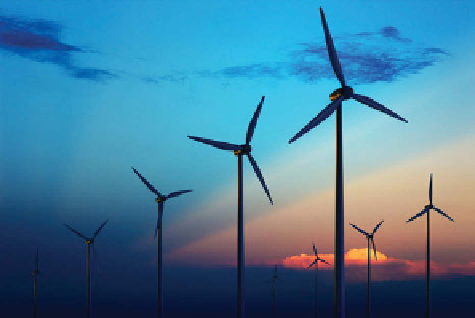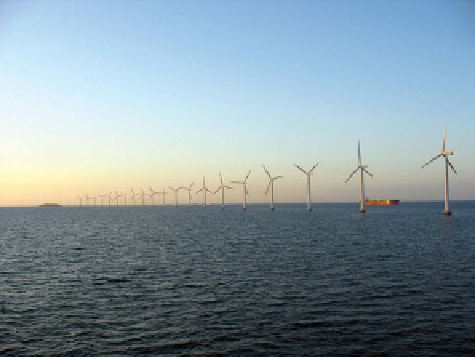Geoscience Reference
In-Depth Information
Wind-BEV
Footprint 1-2.8 km
2
Turbine spacing
0.35-0.7% of US
Nuclear-BEV
0.05-0.062%
Footprint 33%
of total; the rest is
buffer
Cellulosic E85
4.7-35.4% of US
Corn E85
9.8-17.6% of US
Geoth BEV
0.006-0.008%
Solar PV-BEV
0.077-0.18%
Figure 13.2.
Footprint plus spacing area required for a given technology to provide energy for all U.S. vehicles
in 2007 as either battery electric vehicles (in the case of wind, solar, geothermal, and nuclear) or E85 vehicles
(in the case of corn and cellulosic ethanol). In the case of wind, the white is the spacing area, and the red dot in
the center is the footprint. For nuclear, the footprint is one-third of the total. For the rest, the footprint and
spacing are effectively the same. The percentages are relative to all fifty U.S. states. From Jacobson (2009).
13.2. Characteristics of Electricity-
Generating Wind, Water, and
Sunlight Technologies
In this section, the WWS electricity-producing electric
power options are briefly described.
13.2.1. Wind
Wind turbines
convert the kinetic energy of the wind
into electricity. Generally, the slow-turning turbine
blade spins a shaft connected to a
gearbox
.Gears of
different sizes in the gearbox convert the slow-spinning
motion (e.g., 5-10 rotations per minute for modern tur-
bines) to faster-spinning motion (e.g., 1,800 rotations
(a)
(b)
Figure 13.3.
(a) Wind farm over land at sunset.
C
Johannes Gerhardus Swanepoel/Dreamstime.com.
(b) Offshore wind farm, Middelgrunden, Denmark.
C
Rodiks/Dreamstime.com.






































































































































































































































































































































































































Search WWH ::

Custom Search